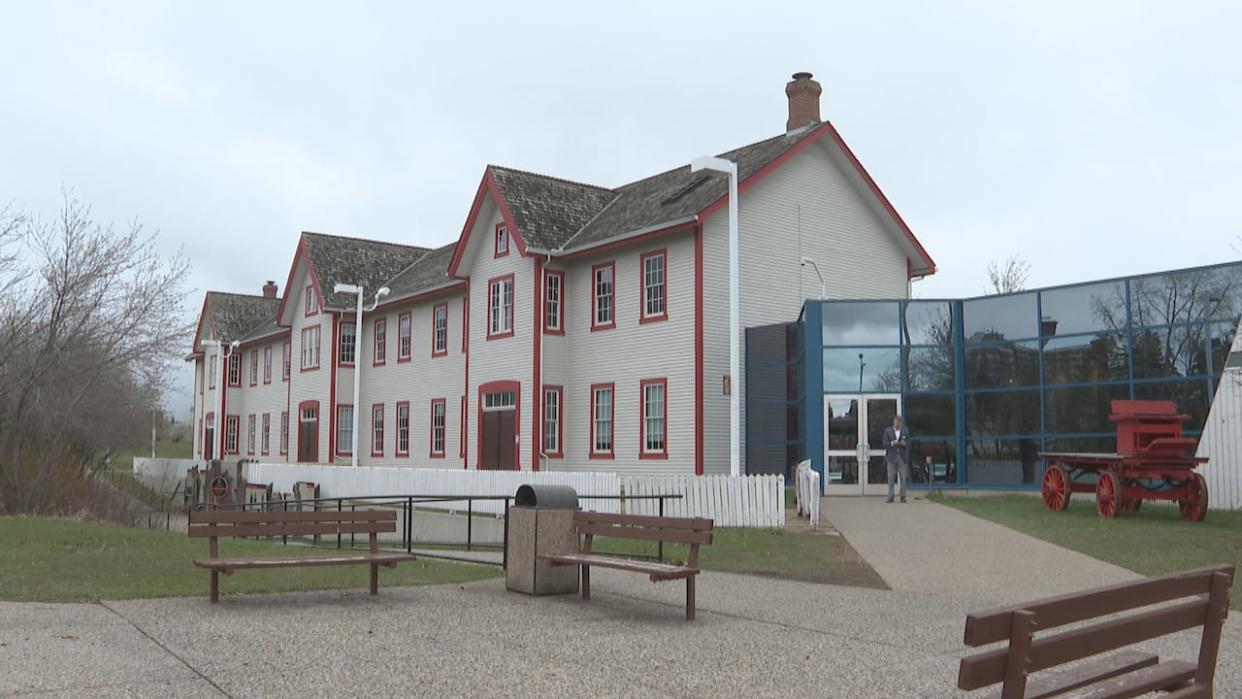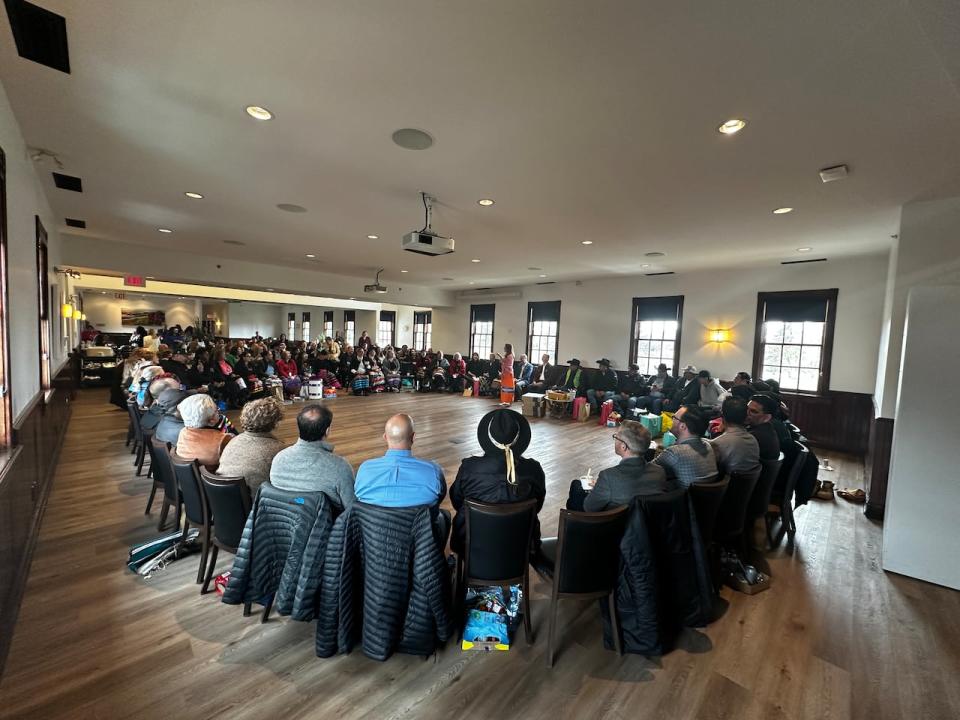Fort Calgary rebranded to represent landmark's multiple histories

In a First Nations ceremony before the official announcement of Fort Calgary's rebranding, Elder Leonard Bastien Weasel Traveller transferred the name I'táámito'táaattsiiyio'pi — meaning "harmonious meeting place" in the Blackfoot language — to the historic landmark.
Now known as The Confluence: Historic Site and Parkland, the site's new name is a welcomed and necessary change, Weasel Traveller said.
"The whole … renovation of the fort is going to include our history and give us respect and honour," he said. "It's long overdue that we do things together, like any community, and we support one another."
The Confluence broadens the narrative to reflect multiple histories and the site's significance to those who've called the land home for thousands of years.
Located where the Bow and Elbow rivers meet, the site has played a central role in both older and more recent histories of the region.
The land was a natural gathering place to hunt, trade and hold ceremonies before Fort Calgary was built by the North West Mounted Police in 1875.
In 1925, it was recognized as a National Historic Site but served as a rail yard until 1975, when the lands were bought by the City of Calgary.

An Blackfoot naming ceremony was held before the announcement of the Fort Calgary rebranding on Thursday. (Terri Trembath/CBC)
The rebranding, according to officials, was made to recognize the layered past that the gathering place represents.
"The predominant narrative of this place can no longer begin and end in the year 1875, when the North West Mounted Police arrived here," said Jennifer Thompson, president of The Confluence.
"People want us to be a place that shines a light on the truth of history."
That history will be put on display through a permanent exhibit showcasing Blackfoot culture that will be curated by Star Crop Eared Wolf — the first curator the museum has hired in 20 years.
The exhibit itself is inspired by a Blackfoot lodge and honours the tradition and the land. It will open in December.
"Traditionally, lodges are made from materials from the landscape," Crop Eared Wolf said.
"When you walk into a lodge, you basically experience the whole landscape and all the knowledge our ancestors had to acquire in order to make it."
The Confluence cultural centre will showcase the stories of the Treaty 7 Nations, the Métis Nation of Alberta, the North West Mounted Police, Fort Calgary and industrialization. The project is expected to take three years to complete.

